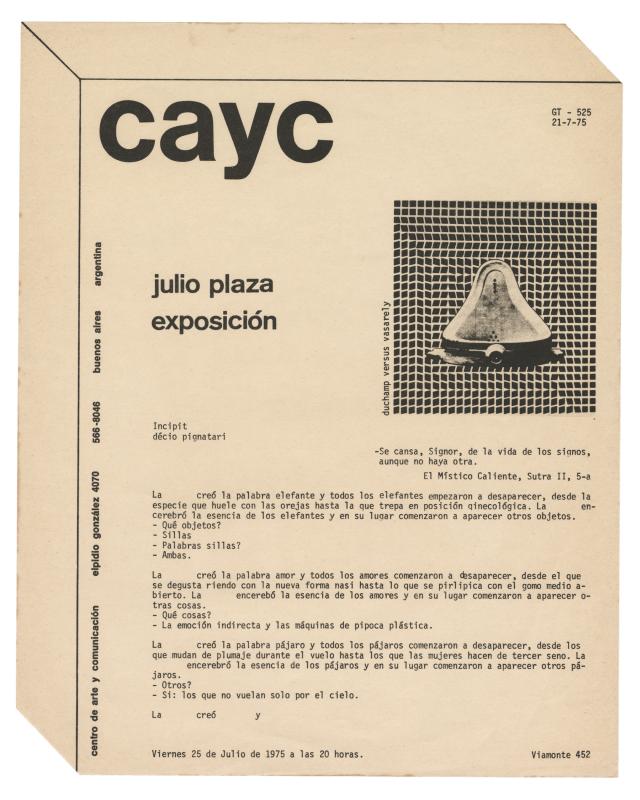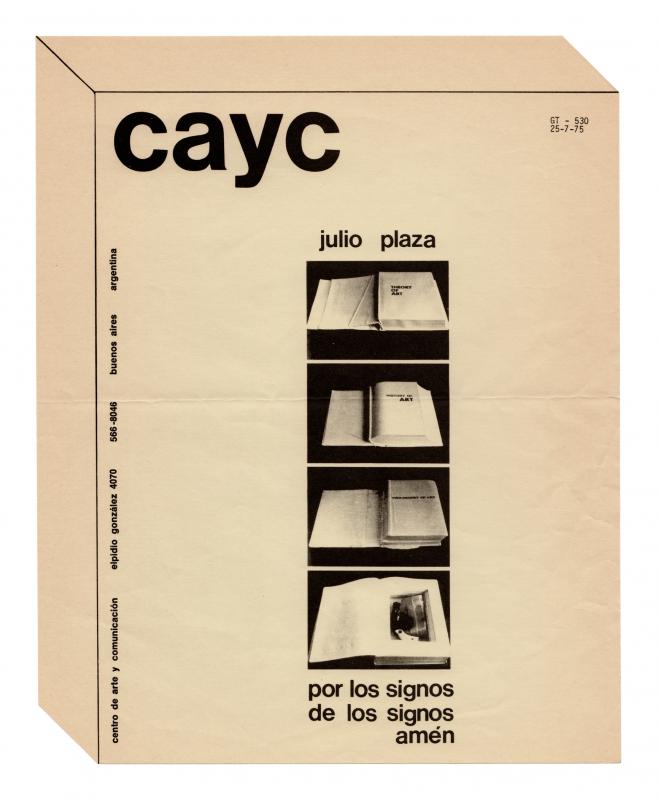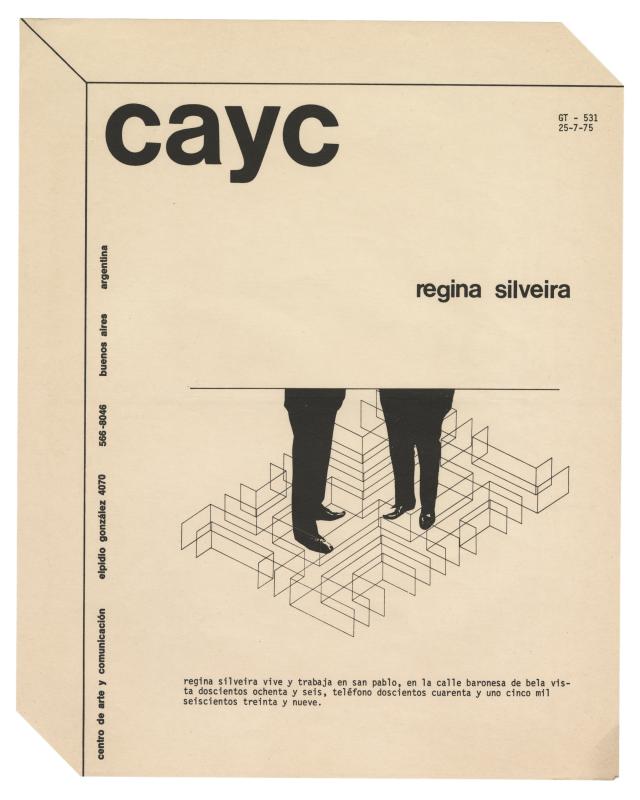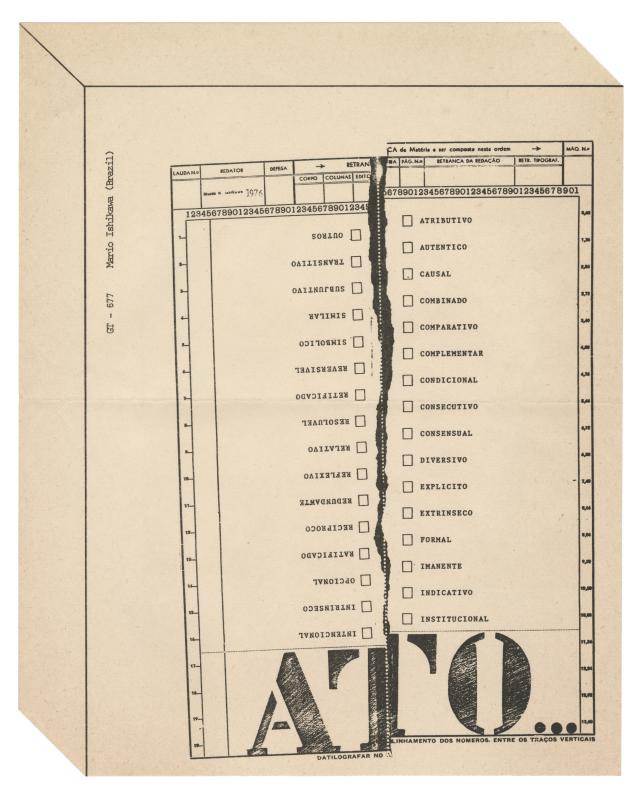Ever since it was founded, the CAYC (Centro de Arte y Comunicación), helmed by the cultural promoter, artist, and businessman Jorge Glusberg, was intended as an interdisciplinary space where an experimental art movement could flourish. The establishment of collaborative networks connecting local and international artists and critics played an important role in this process. The exhibitions shone a light on these exchanges, in which overviews of trends or individual artists provided an introduction to the innovations of international contemporary art and made Argentine and Latin American artists better known on the global scene.
Together with Julio Plaza (GT-525; doc. no. 1476852, GT-530; doc. no. 1476853), Regina Silveira (GT-526; doc. no. 1476849, GT-531; doc. no. 1476854), and Mário Ishikawa (GT-677; doc. no. 1477405), among others, Gastão de Magalhães (b. 1953) was one of the artists who became associated with the CAYC through the efforts of Walter Zanini (1925–2013), the critic, agent, and director of the MAC-USP (Museu de Arte Contemporânea da Universidade de São Paulo) from 1963 to 1978. Glusberg and Zanini contributed to the expansion of a “transnational dialogic territory” by organizing a variety of initiatives including exchanges of regional and international artists, exhibitions, and symposiums. (Luiza Mader Paladino, Caiana, 2016.)
De Magalhães was a member of the first generation of São Paulo artists associated with the USP to experiment with video, art actions, and photography (as a documentary vehicle). He saw the international network involved in mail art as a way to criticize the de facto military regime that governed Brazil for twenty-one years (1964–85). That willingness to transcend boundaries—whether imposed by geography or repression—is expressed in Circulação Postal (Postal Circulation, 1975–76), the series created by de Magalhães (with the help of Francisco Iñarra) as an imaginary demonstration of the route traveled by postcards mailed back and forth from São Paulo to other places in the world.
De Magalhães used black-and-white photographs to create his series of postcards and stamps called This is art (1975). The images in each of them show his face (his eyes closed) with the letters A-R-T placed one-by-one on his tongue. He then produced the video This is art n 2 with the help of the cameraman Hironie Ciafreis. The video—shown at his solo exhibition Ocupación topológica, which opened in February 1979, as this newsletter announces—was one of the works sent to Buenos Aires.
A forerunner to this project was Ocupações de cantos (Interventions in Corners, 1977), presented at the XIV São Paulo Biennial along with Composição e sombras (1977), which were included in the “Uncatalogued Art” section. Both projects were created keeping in mind the architectural space where they were exhibited. His experimental work with corners and walls led de Magalhães to develop a method for exploring space. The exhibition at the CAYC expanded this approach by pairing photographic documentation with visual props and individual experiences that challenged architectural spaces. These works also sought to construct a “territory of freedom” to address the repression and violence suffered by artists working in countries that were under the thumb of authoritarian regimes.





